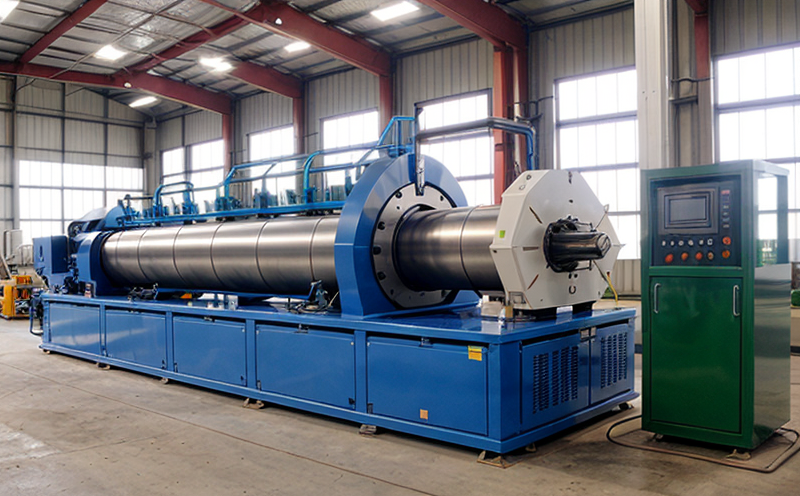EN 15512 Material Efficiency of Recycling Input Streams
The European Standard EN 15512 sets out a method to measure material efficiency in recycling input streams. This standard is particularly important for quality managers, compliance officers, and R&D engineers as it offers a framework to ensure that the recycled materials used in manufacturing processes are of optimal quality.
Material efficiency refers to the extent to which raw materials can be reused or recycled without losing significant functionality or performance characteristics. This standard helps determine how efficiently different types of waste streams contribute to the recycling process, thereby ensuring compliance with environmental regulations and enhancing sustainability practices within industries that rely heavily on recycled materials.
The testing procedure outlined in EN 15512 involves several key steps: sample preparation, analysis using appropriate methods such as chemical analyses or physical tests, comparison against specified criteria, and finally, reporting the results. By following this standardized approach, laboratories can provide reliable data that support decision-making processes related to waste management strategies.
One of the primary goals of implementing EN 15512 is to promote sustainable development by encouraging industries to maximize resource recovery from waste streams while minimizing environmental impacts associated with traditional extraction methods. This standard also plays a crucial role in fostering innovation within the recycling sector, allowing companies to explore new technologies and processes aimed at improving material efficiency.
Another significant advantage of adhering to EN 15512 is its contribution towards achieving regulatory compliance requirements imposed by various governments worldwide. Many countries have implemented policies encouraging businesses to adopt more environmentally friendly practices, including reducing waste generation and increasing recycling rates. Adopting standards like EN 15512 ensures that companies remain compliant with these regulations while demonstrating their commitment to environmental responsibility.
Furthermore, this standard supports efforts aimed at enhancing overall resource productivity across supply chains by providing consistent metrics for evaluating material efficiency within different stages of the recycling process. This consistency allows stakeholders involved in waste management and recycling operations to better understand where improvements can be made throughout the lifecycle of products containing recycled content.
| Stage | Description |
|---|---|
| Sample Preparation | This involves collecting representative samples from various waste streams and preparing them for testing according to specified procedures. |
| Analytical Methods | The use of appropriate analytical techniques such as chemical analysis or physical tests to evaluate the quality of recycled materials. |
| Comparison Against Criteria | Comparing measured values against established criteria set forth in EN 15512 to determine compliance levels and areas for improvement. |
In conclusion, the implementation of EN 15512 provides a robust framework for assessing material efficiency within recycling input streams. Its application helps promote sustainable practices, ensures regulatory compliance, supports innovation in waste management, and enhances resource productivity throughout supply chains.
Industry Applications
This standard finds wide applicability across numerous industries where recycled materials play a significant role. For instance, manufacturers of construction products often rely on recycled aggregates such as crushed glass or plastic waste to produce lightweight concrete or asphalt alternatives. By applying EN 15512 during the design phase, these companies can ensure that their raw material sources meet stringent quality standards before incorporation into final product formulations.
Similarly, automotive manufacturers increasingly incorporate post-consumer plastics into vehicle components such as bumpers or interior trim pieces. Implementing this standard ensures that recycled plastic pellets used in manufacturing processes maintain consistent performance characteristics throughout production lines, ultimately leading to higher-quality end products.
In the electronics industry, there is growing interest in recovering precious metals like gold and silver from scrap electronics through hydrometallurgical processes. Using EN 15512 helps standardize these recovery operations by providing clear guidelines for evaluating the efficiency of different methods employed during metal extraction.
For packaging manufacturers, using recycled paperboard or cardboard in carton boxes is becoming increasingly common due to rising consumer awareness about sustainability issues associated with single-use plastics. By implementing this standard early on in product development stages, companies can ensure that their recycled fiber sources meet necessary quality thresholds before being incorporated into final packaging designs.
Finally, the textile sector has seen a surge in demand for sustainable fabrics made from recycled fibers such as polyester or cotton. Applying EN 15512 during raw material sourcing ensures consistency across batches of recycled yarns used throughout manufacturing processes, resulting in more reliable product quality and performance.
Environmental and Sustainability Contributions
The adoption of EN 15512 contributes significantly to environmental protection by promoting efficient use of resources and reducing waste generation. By ensuring that recycled materials meet specified quality standards, this standard helps minimize the need for virgin raw material extraction processes, which are often associated with significant environmental impacts such as deforestation or depletion of fossil fuel reserves.
Furthermore, adhering to EN 15512 encourages circular economy practices by fostering greater reuse and recycling rates within various industries. This shift towards closed-loop systems reduces landfill congestion while promoting economic growth through job creation in waste management sectors.
The standard also plays a crucial role in supporting global commitments made under frameworks like the Paris Agreement, which aim to limit climate change by reducing greenhouse gas emissions associated with industrial activities. By implementing EN 15512 during product development phases, companies can contribute positively towards these goals while maintaining competitive advantage in markets demanding eco-friendly offerings.
Finally, compliance with this standard demonstrates a company's commitment to responsible environmental stewardship and social responsibility initiatives aimed at improving quality of life for future generations. This aligns well with broader trends toward corporate sustainability reporting practices where companies publicly disclose their efforts towards reducing waste impacts on ecosystems.





